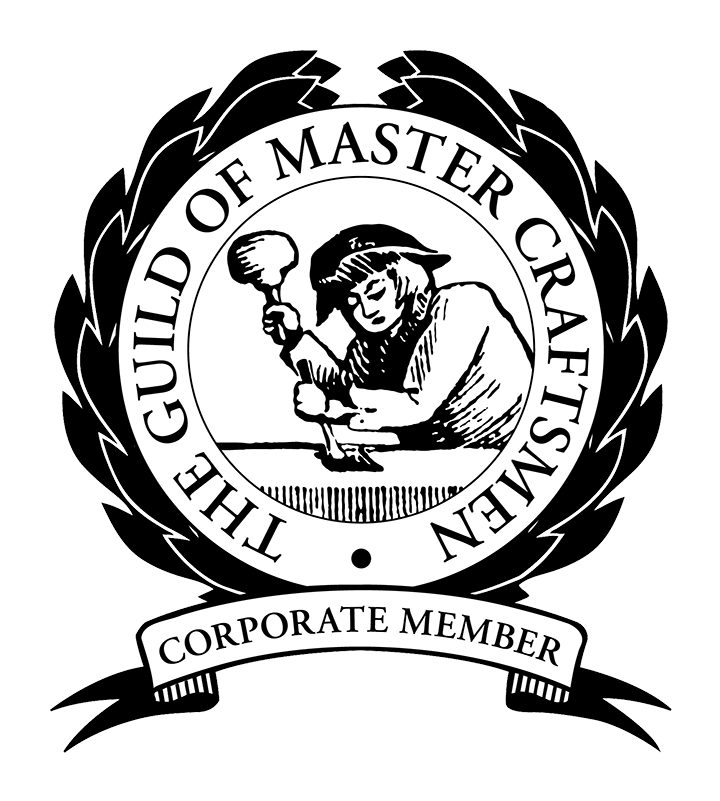Table Of Contents
Planning a fit-out in London in 2025 requires a sharp eye on costs. Material prices are climbing, labour is in high demand, and supply chain hiccups are all too common. For businesses wanting to refresh their spaces, understanding these cost factors upfront can make all the difference.
This guide will walk you through the main cost drivers in London’s fit-out market. We’ll look at typical expenses for different project types and share tips on keeping your budget on track. By the end, you’ll have a clear sense of what to expect—and how to make smart choices to keep costs under control.
Factors Influencing 2025 Fit-Out Costs in London
To navigate fit-out costs in London, you must know the factors driving up budgets. In 2025, several factors will affect the cost of fit-out projects. Businesses must know the details before committing to a design or budget. Here’s a closer look at what’s driving up fit-out costs in London this year:
Rising Material Costs and Inflation
Material costs have been on a steady rise, and 2025 is no exception. Inflation has raised prices for steel, concrete, fixtures, and finishes. This affects fit-out projects. Costs vary by material. So, selecting the right materials is key to staying on budget.

Also, global supply chain issues mean some materials may take longer to source or may cost more. Using locally sourced materials can help offset these issues. It also adds a sustainable angle to your project. This is increasingly valued in London’s competitive market.
Labour Costs and Skilled Worker Shortages
Labour remains one of the most significant expenses in fit-out projects. London’s construction sector has a skilled worker shortage. It will last until 2025. This demand often leads to higher wages. Moreover, complex projects need experienced tradespeople, which can significantly raise costs.
Early planning to secure contractors and builders can prevent unexpected costs. Some businesses are adopting phased schedules. This allows for a gradual fit-out, matching workforce availability and avoiding peak rates.
Logistics and Post-Brexit Supply Chain Challenges
Logistics have become a more prominent factor in project costs post-Brexit. Import restrictions and tariffs have made it slower and costlier to source materials from Europe. This often leads to delivery delays and higher costs, especially for delayed items.
Collaborating with suppliers well-connected in London or the UK can ease complications. Also, it’s smart to factor in possible delays. Adding flexibility to your timeline helps avoid expensive overruns.
Cost Breakdown for Different Types of Fit-Outs
Fit-out projects vary greatly in scope and style, so understanding the cost differences between each type is essential. In London, fit-out work is often categorised into Shell & Core, Cat A, and Cat B, each with distinct cost drivers and considerations. Here’s a breakdown of what each type entails and how it might impact your budget in 2025:
Shell & Core
Shell & Core projects focus on the building’s bare essentials. They leave most of the interior unfinished, including the walls, ceilings, and floors. For companies that prefer customising every detail, this option can provide flexibility. However, it also comes with added costs later for customisation and finishes.
In London, large corporations and retailers often choose Shell & Core fit-outs. They want to create unique interiors. While initial costs might seem lower, these projects often need a lot of Cat B to work later to make the space usable. Factoring in these later costs is essential for accurate budgeting.
Cat A Fit-Out
Cat A fit-outs are more comprehensive. They finish the space to a basic level. They often add raised floors, suspended ceilings, and essential systems. It’s ready for a business but lacks the customisation many companies want for their brand.

Cat A projects are popular in London’s commercial buildings. They offer a “blank canvas” for businesses to add their designs later. These projects are usually cheaper than Shell & Core for getting a space ready for tenants. However, businesses will still need to invest in customisation (Cat B work).
Cat B Fit-Out
Cat B fit-outs provide a complete, tailored finish for businesses. They include partitions, furniture, branding, and high-quality finishes. For a unique, branded space, Cat B is the best option.
However, Cat B projects are the most costly due to their high level of customization. Many London businesses choose a mix of Cat A and Cat B to balance cost and personalization. When planning a Cat B fit-out, be prepared for flexibility. Custom finishes and designs can significantly increase costs.
Cost-Saving Strategies for 2025
In a city as expensive as London, managing fit-out costs in 2025 requires smart strategies. It’s vital to create a functional, attractive space. But, it’s equally important to control spending. Here are some effective ways to reduce expenses without sacrificing quality.
Prioritise Sustainable and Reusable Materials
Sustainability isn’t just a trend—it’s a practical way to cut costs in fit-out projects. Using reusable materials can save money and lessen the need for replacements. For instance, reclaimed wood, recycled metal, and eco-friendly finishes are good options. They help the environment and attract clients and tenants interested in green credentials.
Local sourcing is another smart approach. Materials sourced locally can be more affordable, with fewer logistical costs and delays. Also, using energy-efficient lighting and appliances can cut your costs. It’s a win-win for your budget and the planet.
Adopt a Flexible Project Schedule
Rushing a fit-out project raises costs due to the high demand for materials and labour. In 2025, a lack of skilled workers will hit businesses. They can save money by choosing a phased or flexible timeline. It lets you finish parts of the project as resources become available. This helps avoid high labour costs and material shortages.
A flexible schedule has another advantage. It allows time to find alternatives if some item prices spike. Having this flexibility can be a valuable way to avoid budget overruns.
Focus on Energy Efficiency
Energy-efficient upgrades may seem expensive at first. But, they can save money over time. These features include LED lighting, smart thermostats, and energy-efficient HVAC systems. They cut costs and lower your carbon footprint.

In London, energy costs are high. So, energy-efficient solutions pay off quickly. Many companies see a return on investment within a few years. So, this is a smart choice for businesses with long-term plans to occupy their space.
Choose a Design-Build Contractor
Design-build firms manage both the design and construction of fit-outs. This approach simplifies the process and reduces costs. Often, these contractors have strong ties with suppliers and subcontractors. This leads to discounts and quicker project completion.
A design-build approach reduces miscommunication between designers and builders. This cuts costly errors. It’s ideal for tight budgets. Here, the contractor handles most coordination. This keeps the project on schedule and within budget.
Budgeting and Financing Options for Fit-Out Projects in London
A clear budget and good financing are vital for a successful fit-out project. London costs can quickly spiral out of control, so a solid plan for budgeting and financing is crucial. Here’s how to effectively manage these financial aspects:
Start with Detailed Budget Planning
A solid budget is key to a successful fit-out. First, list all costs: materials, labour, permits, and unexpected expenses. Many London businesses often overlook permit and compliance costs, leading to surprises. Adding a 10-15% buffer to your budget helps manage these surprises.

Divide your budget into phases: design, construction, finishing, and furnishing. This helps control spending. It also shows where costs are highest. So, you can adjust easily if needed.
Explore Financing Options
Fit-out projects often need a mix of funding, especially for small to medium-sized businesses. In London, there are several financing options available, each suited to different needs:
- Bank Loans: Traditional bank loans are popular for businesses with good credit. These loans offer predictable repayment plans, although interest rates can vary.
- Asset-Based Financing: For projects with costly equipment or furnishings, use asset-based financing. It lets you borrow against them. It’s a good option for businesses that need to preserve cash flow.
- Government Grants and Incentives: The UK has grants and incentives for sustainable building projects. They often cover part of the cost of energy-efficient upgrades. This makes them valuable for green-focused fit-outs.
Monitor and Adjust During the Project
Effective budgeting doesn’t end once the project starts. Regularly tracking expenses against your budget is essential to avoid overspending. Watch for changes in material and labour costs, as they can fluctuate. Also, keep in touch with your contractors and suppliers. This helps you spot issues early and adjust to stay on budget.
Cost-tracking software and project management tools can help. They let you monitor spending in real-time. Stay proactive and informed. You can then make timely decisions. They will prevent your project from going over budget.
Choosing SEI for a Successful Fit-Out in 2025
A fit-out project in London in 2025 demands a careful balance of budget, design, and strategy. With material and labour costs on the rise, it is crucial to understand fit-out expenses. This helps prevent overspending and keeps projects on track. To keep projects functional and profitable, manage costs and explore sustainable options.
At SEI, we leverage our deep experience in London’s fit-out market to deliver quality, affordable results. We stay updated on industry trends and focus on sustainable solutions. Our team guides you through the process, ensuring your vision is realised within budget and to your standards.
If you want to start a fit-out project, SEI is ready to help. Our expert team understands London’s unique challenges. We’ll ensure your investment pays off. Let’s create a space that reflects your brand and meets your needs. Contact SEI today to discuss how we can make your fit-out vision a reality.



